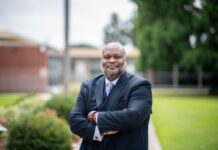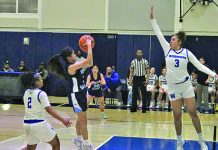Beware of hidden news bias.
We all know what bias is — or, at least we think we do. Like with art, people may not be able to define bias, but they “know it when they see it.”
All major news sources, from cable news to newspapers to broadcast news to radio to the Internet, have been accused of bias at some point or another.
Beware of hidden news bias.
We all know what bias is — or, at least we think we do. Like with art, people may not be able to define bias, but they “know it when they see it.”
All major news sources, from cable news to newspapers to broadcast news to radio to the Internet, have been accused of bias at some point or another.
If a story seems to ignore some valid viewpoints while giving added weight to others, that’s bias. If a California river water story talks to farmers but ignores environmentalists or fishermen, that’s bias. If a transportation story is supportive of freeway construction but dismissive of rail, that’s also bias.
It should be noted that not all who are accused of bias are in fact guilty of it. Commentary is allowed to be biased — that’s the whole point.
The only real problem with commentary is when it is not clearly presented as such. Newspapers frequently label pages “Opinion” or “Viewpoint” and TV news should work harder to make sure viewers understand the difference between Glenn Beck and nightly news anchors.
Science stories often suffer from an unusual form of reverse bias. Science reporters will sometimes bend over backwards to try to present “both sides of the story.” In political stories, giving “equal time” makes sense. Liberals and conservatives can look at the same facts and come up with opposite positions.
However, science is not politics. Scientific issues are not black and white. Science moves forward by slow increments, and undeniable, absolutely conclusive truth is hard to come by. Science demands challenges. New ideas must be tested, and ideas which fail are rejected.
However, even when an idea passes examination, scientific consensus is rarely 100 percent. Take global warming. Manmade climate change is accepted by an overwhelming majority of the scientific community. Quite a bit of climate denial comes from industry-funded studies or cherry picking the facts which support a position. It makes no sense to treat climate change as a 50/ 50 coin flip when the scientific evidence is overwhelmingly on one side of the issue.
There is another kind of bias which gets less notice than the usual “Fox News is in with the GOP” or “PBS is liberal” complaints.
Story selection bias is invisible, but it can make a huge difference.
The world is full of stories. There is local news, county news, statewide news, national news and news from around the world. TV news broadcasts are only so large and newspapers are only so big. At some point, news organizations must decide to play up some stories and ignore others.
Surveys show that people like local news, so local news organizations pick local stories. Often, a local newspaper may be the only news outlet to even run a story about a local event. A local focus can become a type of bias if a news organization is not careful. Suppose a company is considering two potential locations for a factory — one local and one not. Should the local news promote the local location, or simply report on the facts — even if the facts hurt?
But this is a relatively harmless sort of bias. We all want our local community to do well.
The trickier question is, how much of any one kind of reporting do we need? How much crime news should an organization report? How much education news is too much or not enough? If all you saw on TV was crime reports, would you feel safer or less secure? What is the right balance between positive news and negative news?
Of course, picking and choosing some news over other news is not all bad. If I personally want rail transit news, I will search for it and can often find it on the Web.
Unfortunately, there are no magic wands to eliminate bias. When we read newspapers or watch TV news or grab news off the Internet, it is up to each individual to determine what seems biased and what seems fair.
When you read, ask yourself — do the writers consult multiple sources of information? And always pay attention to people’s titles in news stories. It is up to you to decide if you trust a gasoline company representative to tell the truth on issues of air pollution, energy efficiency or climate change.
The Internet makes it easy to read information from lots of different sources — so read lots of different news accounts. And like Sun Tzu said, “keep your friends close and your enemies closer.”
In today’s highly polarized world, some people may prefer biased news to unbiased news. But if you pay attention and stay alert, there is no reason to be fooled by bias.
James Fujita is a former GVN news editor. He works as a copy editor for the Visalia Times-Delta in California’s Central Valley. Fujita can be contacted at jim61773@yahoo.com.



















